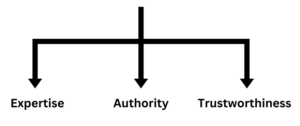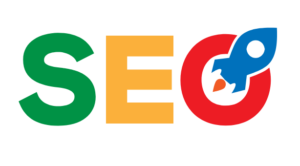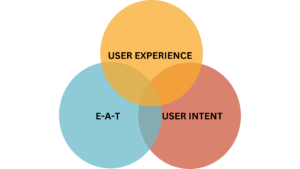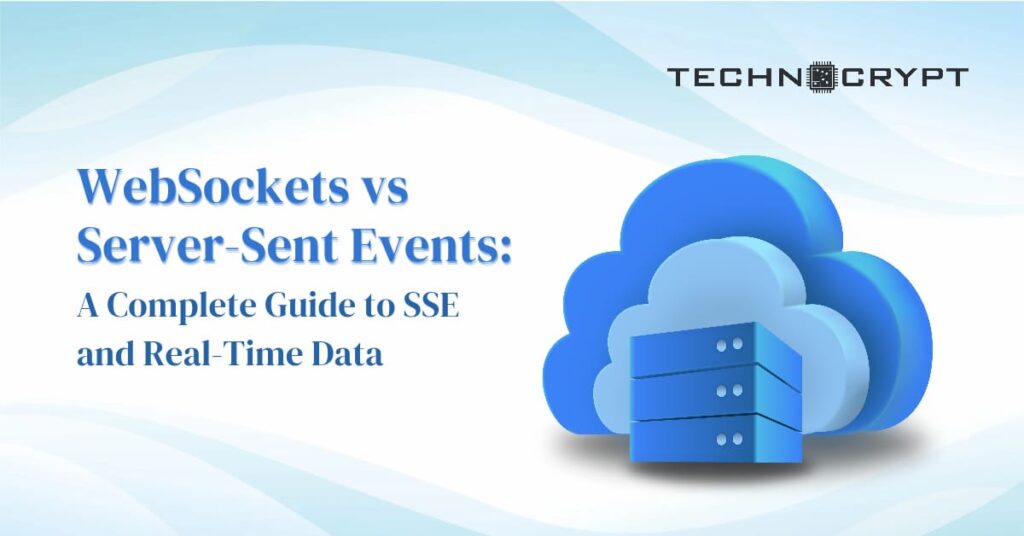If you’ve noticed your website traffic doing something unusual lately—whether it’s soaring to new heights or suddenly dropping off—it’s not just you. Google December 2024 Core Update has arrived, reshaping search results and SEO strategies alike. If you are wondering why there’s a core update, this isn’t just any core update this month; it reflects Google’s ongoing push to improve its different core systems and deliver more people-first content.

Every time Google releases an update, SEOs and site owners brace for impact. But with this update starting on December 12 and completing 6 days later on December 18, the effects are already being felt. Is this update a small tweak, or could it be the largest core update yet? Let’s break it down.
Understanding the 2024 December Update
What is a Core Update?
Google Updates, including the December 2024 Update, are big, sweeping changes to how its search engine works. They’re not the little tweaks that fix specific issues like spam or fake reviews; these updates completely overhaul how websites are ranked. Essentially, they’re Google’s way of making sure that the content users see is high-quality, relevant, and trustworthy.
Core updates, like the March 2024 Core Update, August 2024 Core Update, and even the September 2023 Helpful Content Update, are major overhauls of Google’s core algorithm. They’re designed to refine how Google rankings work and ensure that users find helpful content in the search engine.
This particular update follows the November 2024 Core Update, which started a week after the November Helpful Content Update. According to Google, these updates are part of an ongoing effort to refine its core systems we’re always improving—a mission to reward people-first content over outdated SEO tricks.
Key Features of the 2024 Update
The 2024 Update that began in December brings some noticeable shifts in how Google evaluates content, focusing even more on what users actually want and need when they search, as highlighted by the latest algorithm update. Here’s what’s changed.

Better Understanding of User Intent
Google is getting smarter at figuring out why someone is searching for something. It’s no longer enough to throw keywords into an article and hope it ranks. The algorithm now prioritizes content that really answers the user’s question or solves their problem. Google has improved its ability to understand search intent. The November Core Update hinted at this, but the December core update has solidified it. For instance, a query like “best laptops for remote work” now prioritizes detailed comparisons over generic lists.
E-A-T: Expertise, Authority, Trustworthiness
The December 2024 Core Update emphasizes E-A-T more than ever. Websites with professional authorship and clear citations—especially in sensitive industries like healthcare or finance—are winning. This builds on trends from the September 2023 update and help page updates. Google said this core update reflects its commitment to showing trustworthy content.

User Experience Makes Difference
The update’s impact on site’s UX is significant. Metrics like Core Web Vitals, page speed, and mobile responsiveness now weigh heavily in Google’s rankings. Slow-loading pages or those riddled with ads are being penalized. As Google wrote, “We’re always improving search for our users.”
Outdated SEO Tricks Are Dead
Gone are the days when keyword stuffing and backlink schemes could boost your rankings. The 2024 update makes it clear that those tactics are no longer effective, especially in light of the different systems being implemented by Google. Instead, Google is rewarding content that’s written naturally and delivers real value. If your website is filled with thin, low-effort pages designed just to get clicks or drive ad revenue, you’re likely seeing a drop in traffic. This update is about moving beyond tricks and focusing on creating genuinely helpful content.
Industries and Niches Benefiting from the Update
Some industries have emerged as clear winners following Google’s 2024 Update, particularly those that align naturally with the platform’s heightened focus on expertise, authority, and trustworthiness (E-A-T). Sectors such as Healthcare websites must adapt to the evolving standards set by Google’s algorithm updates to remain competitive. are particularly affected by the algorithm update, requiring a reevaluation of content strategies. healthcare, education, and news have enjoyed significant boosts in visibility. These fields typically produce well-researched, authoritative, and evergreen content—traits that Google now prioritizes more than ever.
Winners
- Independent publishers: Websites with high-quality, well-researched content, personal sites like Healthline or popular search blogs such as Search Engine Land, have seen gains.
- News outlets: Trusted sources, like the New York Times, that produce people-first content benefit from their authority and transparency.
Losers
- Affiliate marketers: Thin or repetitive content didn’t fare well. Sites relying on tactics penalized in the September 2023 Helpful Content Update have struggled.
- Outdated SEO practitioners: Those relying on keyword stuffing or low-quality backlinks saw significant declines. Google made it clear: these tactics don’t work anymore.

Examples of Successful Websites
Several notable websites have experienced significant growth in rankings since the 2024 Core Update. Here are two standout examples:
- Healthline
Healthline has become a go-to resource for health-related queries, and the Update has further cemented its position. By publishing in-depth, medically reviewed articles, Healthline has built trust with both users and Google. Its content aligns closely with user intent, whether someone is searching for symptoms, treatment options, or wellness advice. This commitment to accuracy and expertise has resulted in a noticeable boost in rankings for competitive keywords. - The New York Times
A titan in journalism, The New York Times has benefited from the update due to its focus on producing authoritative, in-depth reporting. Its coverage of global events, coupled with investigative journalism and well-cited analysis, aligns perfectly with Google’s focus on high-quality, trustworthy content. By maintaining a strong digital presence and adapting to modern SEO best practices, The New York Times has seen improved visibility across a wide range of queries.
What These Winners Did Right
The success of these websites isn’t accidental—it’s the result of strategic, user-focused efforts. Here’s a closer look at what they did to align with Google’s priorities:
Staying Ahead of SEO Trends
Both sites have demonstrated an ability to adapt to Google’s evolving algorithms. By conducting regular content audits, addressing technical SEO issues, and refining their strategies, they’ve maintained their relevance and visibility in an ever-changing digital landscape.
Consistently Publishing High-Quality Content
Both Healthline and The New York Times prioritize producing well-researched, engaging, and evergreen content. By ensuring their articles are detailed, accurate, and written by experts, they build trust with their audience and meet Google’s standards for E-A-T.
Optimizing for User Intent
These sites have mastered the art of understanding their users’ needs by using AI overviews. Whether it’s providing step-by-step guides, medical advice, or in-depth news analysis, their content is designed to answer specific queries effectively. This focus on intent-driven content has set them apart from competitors.
Prioritizing User Experience
Technical SEO is a cornerstone of their success. Fast-loading pages, mobile-friendly designs, and intuitive navigation ensure users have a seamless experience, which is crucial for adapting to the latest algorithm update. This attention to usability is a key factor in maintaining high rankings in today’s algorithm.
Losers of the 2024 Core Update
Industries and Websites Negatively Impacted
Not every website fared well in the wake of Google’s 2024 Update. Certain industries and website types took significant hits, particularly those that failed to adapt to the update’s heightened focus on content quality, user intent, and trustworthiness.
Among the hardest-hit were affiliate marketing sites, low-effort blogs, and directories filled with thin or duplicated content. These platforms often prioritize quick monetization over user value, relying on outdated SEO practices that no longer align with Google’s evolving algorithm, especially in light of the December 2024 Update. With the 2024 update, Google has reinforced its commitment to delivering valuable, relevant, and trustworthy content, leaving these sites scrambling to recover lost rankings.
Additionally, websites that depended on manipulative SEO tactics, such as keyword stuffing, excessive backlinks from low-quality sources, or clickbait, saw significant visibility declines. The update underscores that quick hacks or shortcuts are no longer sustainable strategies in SEO.
Examples of Sites That Lost Rankings
1. Content Farms

Websites that churn out shallow, keyword-stuffed articles were among the biggest losers. These sites often prioritize quantity over quality, creating articles that lack depth or fail to serve a clear purpose for users, particularly in the context of the November 2024 Core Update. Google’s algorithm has become increasingly adept at identifying this type of content, demoting it in favor of more comprehensive, valuable alternatives. As a result, many content farms experienced steep drops in traffic, with some seeing their rankings disappear entirely for competitive queries.
2. Over-Optimized E-commerce Sites

Small e-commerce platforms that relied on outdated SEO practices also struggled. Many of these sites featured thin category pages filled with repetitive product descriptions or keyword-stuffed headings, offering little value to shoppers. For example, an e-commerce page labeled “Best Running Shoes” might have included a few bullet points and stock images but lacked in-depth product comparisons, user reviews, or guides to help consumers make informed decisions. Google now prioritizes sites that offer robust, intent-driven experiences, leaving overly optimized but underdeveloped e-commerce pages in the dust.
Common Mistakes That Led to Ranking Declines
The websites that lost rankings shared several common pitfalls that made them vulnerable to the changes introduced in the 2024 Update. Here’s a closer look at these mistakes regarding the impact of the Google December 2024 Update:
1. Ignoring E-A-T Standards
Many of the affected websites failed to establish expertise, authority, or trustworthiness in their content. For instance, affiliate sites with no clear authorship or directories filled with generic, uncredited information struggled to gain Google’s confidence. Without credible sources or expert input, these sites were unable to compete against platforms that met E-A-T criteria.
2. Neglecting User Experience
User experience (UX) is now a component of Google’s ranking algorithm, and sites that overlooked this factor suffered as a result. Slow-loading pages, non-responsive designs, and confusing navigation created friction for users, signaling to Google that these sites were not worth promoting. Websites that failed to meet Core Web Vitals metrics, such as loading speed or layout stability, were particularly affected.
3. Over-reliance on SEO Gimmicks
Many losers relied on outdated or manipulative SEO tactics, such as keyword stuffing, link farms, or cloaking. These methods may have worked in the past, but Google’s increasingly sophisticated algorithm has rendered them ineffective. Content that was overly focused on search engine optimization rather than user value was quickly demoted in rankings.
4. Producing Thin or Duplicate Content
Websites that offered minimal content value were penalized heavily. This includes pages with duplicate content copied across different sections or sites and articles that provide only surface-level information without addressing user intent. For example, a blog about “best laptops for students” that simply listed five products with no meaningful comparisons, pros and cons, or user guides is now less likely to rank.
Analysis of the 2024 Update’s Impact
Google’s December 2024 Core Update is reshaping search rankings and how businesses approach SEO. At its core, the update emphasizes user-centric content, trustworthiness, and seamless user experiences.
Key changes include:
- User Intent: Content must address the “why” behind a search, rewarding relevance and depth over surface-level material.
- E-A-T (Expertise, Authority, Trustworthiness): Professional, credible, and transparent content is now essential—especially in sensitive fields like healthcare or finance.
- User Experience: Fast, mobile-friendly, and clutter-free websites are being prioritized, with poor UX facing penalties.
Outdated SEO tactics like keyword stuffing or thin content no longer cut it. Success now requires a holistic approach: high-quality content, technical excellence, and a focus on genuinely meeting user needs. This update isn’t just an adjustment—it’s a call for a smarter, audience-first digital strategy.

Predictions for the Future of SEO
As Google’s algorithms become more sophisticated, SEO will continue to shift toward user-centric practices. The role of AI in search and content creation is likely to grow, with Google focusing on understanding natural language and delivering hyper-relevant results.
In the long term, the emphasis on authenticity and user experience will only increase, forcing businesses to prioritize genuine engagement over shortcuts.
Conclusion
The 2024 Core Update has reshaped the SEO landscape, rewarding websites that prioritize quality, trustworthiness, and user experience while penalizing those clinging to outdated tactics.
Whether you’re a winner or a loser in this update, the lesson is clear: success lies in embracing adaptability, understanding your audience, and creating content that genuinely serves their needs. In this new SEO era, thriving means not just keeping up with Google’s changes but aligning with its mission to make search better for everyone.







